There’s a unique satisfaction in watching a tiny seed transform into a thriving plant, a journey that captures the essence of gardening. Whether you’re just starting to get your hands dirty or have been nurturing gardens for years, growing plants from seed is an enriching experience that brings you closer to nature’s miraculous cycles. Planting from seed not only allows you to witness the full lifecycle of your garden but also offers a sense of accomplishment that’s hard to match. For both novices and veterans, starting from seed can be a cost-effective way to fill your garden with life and learn more about the plants you love.
This article aims to demystify the seed-starting process by introducing you to a selection of easy-to-grow plants. You’ll discover a variety of flowers, herbs, and vegetables that are not only beginner-friendly but also rewarding for seasoned gardeners seeking simplicity and success. By the end of this guide, you’ll be equipped with the knowledge to select, sow, and nurture seeds into flourishing plants, enriching your gardening repertoire. We’ll cover essential tips and tricks to ensure your seeds sprout into healthy seedlings, ready to grace your garden with their beauty and bounty.
Embarking on this seed-growing journey can transform your gardening experience, offering both practical benefits and a deeper connection to your garden. As you cultivate these plants from seeds, you’ll gain insights into their unique needs and characteristics, enhancing your overall gardening skills. Get ready to roll up your sleeves and dig into the joys of seed-starting, where each little seed is a promise of growth and abundance. Together, we’ll explore this rewarding facet of gardening, making it both accessible and enjoyable for everyone.
Choosing Beginner-Friendly Seeds
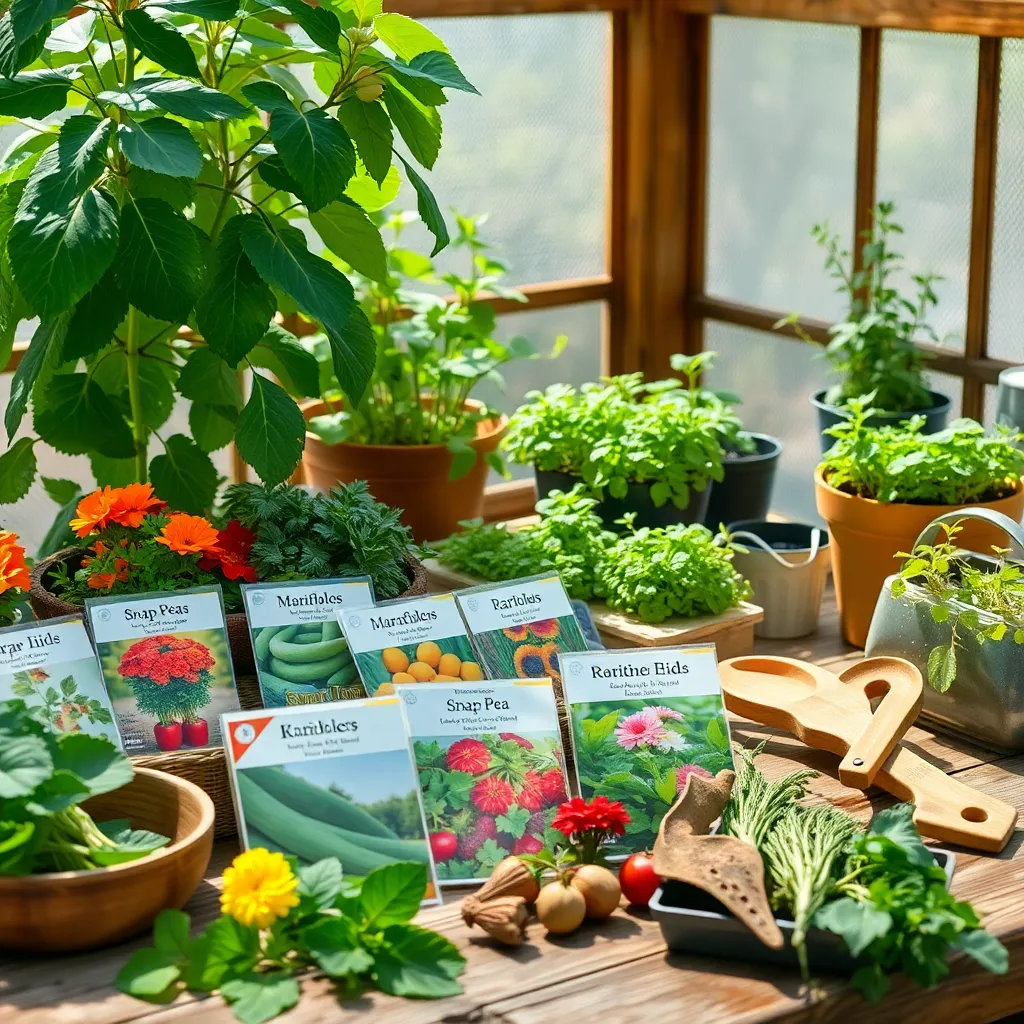
Choosing the right seeds is crucial for beginner gardeners who want to see quick and rewarding results. Some of the most beginner-friendly seeds include radishes, lettuce, and sunflowers, which are known for their fast germination and minimal care requirements.
Radishes, for instance, can germinate in as little as three to five days, offering almost instant gratification. Plant these seeds in loose, well-draining soil and ensure they receive ample sunlight for best results.
Lettuce is another excellent choice for beginners, thriving in cooler temperatures and requiring only moderate watering. Avoid waterlogging by planting in soil enriched with organic matter, which helps retain just the right amount of moisture.
Sunflowers are not only visually rewarding but also tolerant of a variety of soil types. Plant them in a sunny spot and ensure they are spaced adequately to allow for their tall growth.
For those ready to dive deeper, consider experimenting with companion planting to optimize growth and deter pests naturally. Pair sunflowers with cucumbers to provide shade and support, improving the garden’s overall productivity.
Optimal Germination Conditions
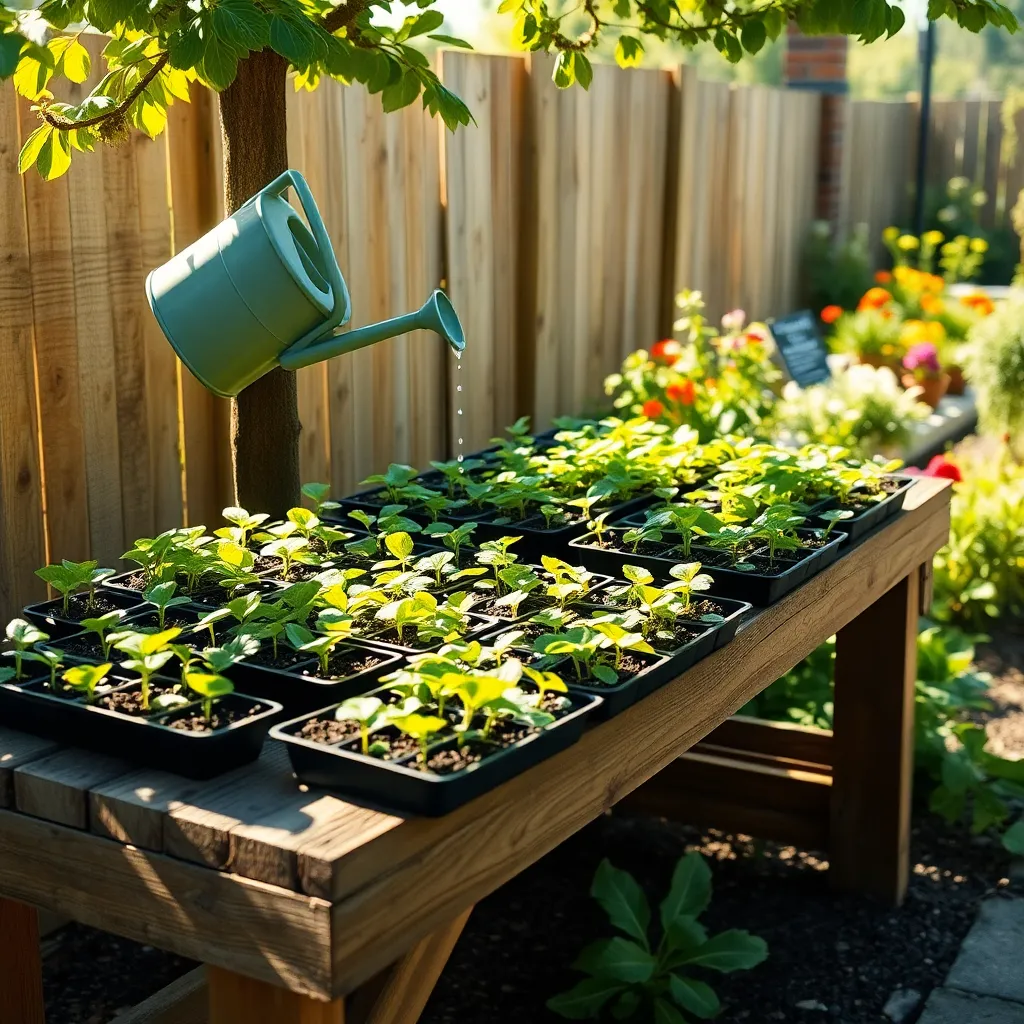
To successfully germinate seeds, it’s crucial to provide the right conditions that mimic their natural growing environment. Temperature, light, and moisture are the three pillars of successful seed germination, ensuring that seeds can break dormancy and begin to grow.
Many seeds require a temperature range between 65°F to 75°F (18°C to 24°C) for optimal germination. To achieve this, consider using a seedling heat mat or placing your seed trays in a warm spot in your home.
Proper moisture levels are just as important as temperature. Seeds need to remain consistently moist but not waterlogged, so it’s best to use a fine mist spray or gently water from the bottom to avoid disturbing the seeds.
Light requirements can vary, with some seeds needing darkness to germinate while others require light. Always check the seed packet for specific instructions, and consider using grow lights to ensure your seedlings receive the appropriate amount of light for robust growth.
For beginners, monitoring the germination process can be made easier by using a transparent plastic cover over your seed trays to maintain humidity. Once seedlings appear, gradually remove the cover to acclimate them to lower humidity and prevent mold growth.
Advanced gardeners may want to experiment with techniques such as stratification, which involves exposing seeds to a period of cold to simulate winter conditions before germination. This technique can be particularly useful for perennials and trees that have a natural dormancy period.
Simplifying Seedling Care
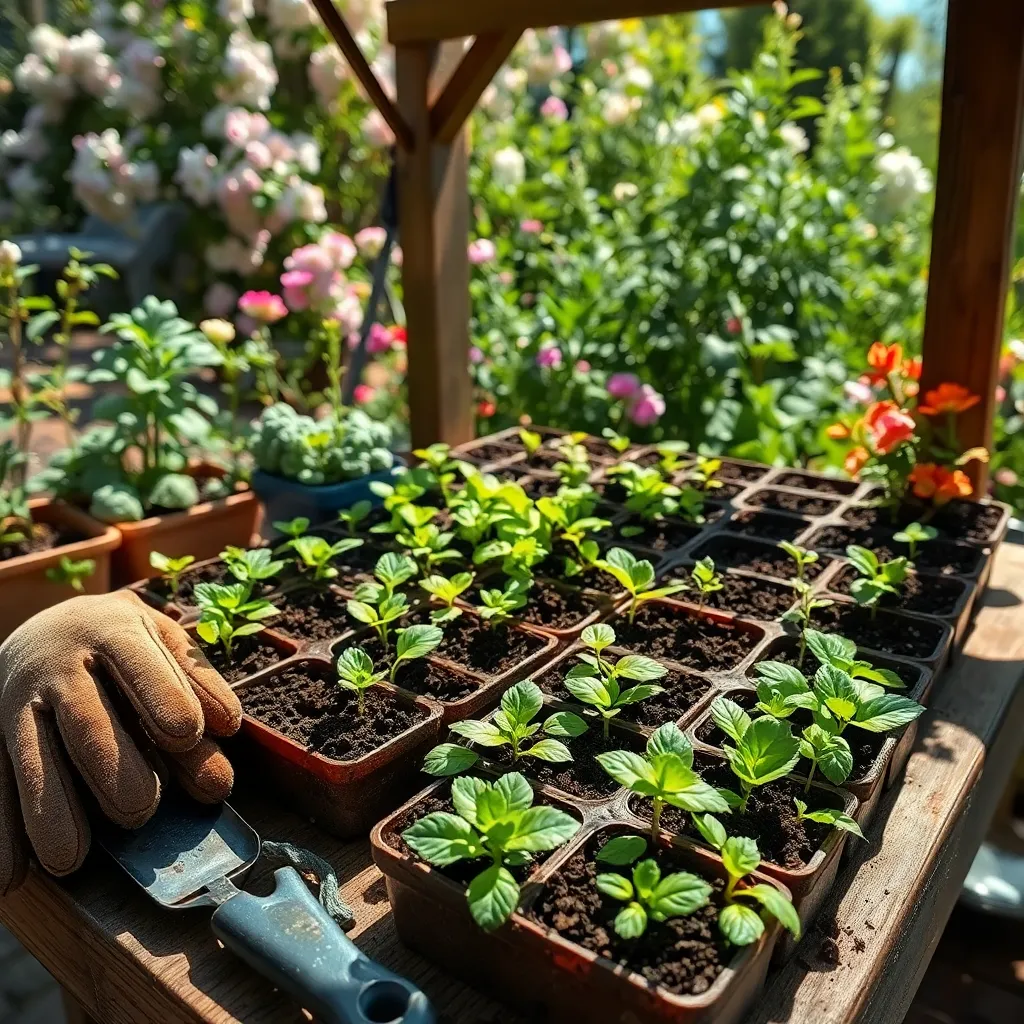
Seedlings require a nurturing environment to thrive, and one of the most important aspects is consistent watering. It’s crucial to keep the soil moist but not waterlogged, using a spray bottle to gently mist the seedlings twice a day, particularly if they are grown indoors.
Providing adequate light is another key factor in successful seedling care. Position your seedlings on a sunny windowsill or use grow lights to ensure they receive at least 12-16 hours of light per day, which helps prevent them from becoming leggy.
Maintaining the right temperature is essential for seedling development. Aim for a consistent temperature of about 65-75°F (18-24°C), and consider using a heat mat if the ambient temperature is too low.
As seedlings grow, they need to be gradually acclimated to outdoor conditions—a process known as hardening off. Begin by placing them outside in a sheltered location for a couple of hours each day, gradually increasing their exposure over a week or two to help them adjust.
Transplanting with Ease
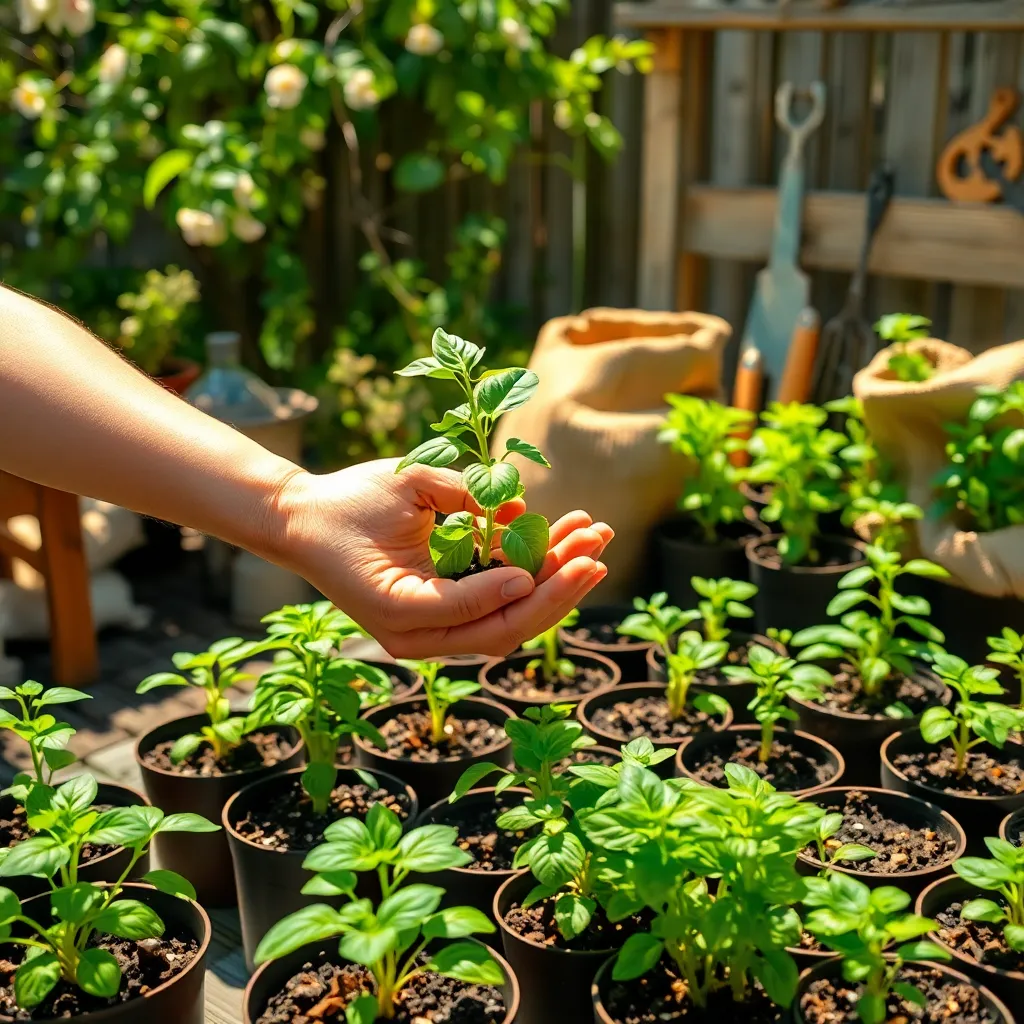
Transplanting seedlings can be a seamless process when you prepare thoroughly. Begin by ensuring that your seedlings have developed at least two to three true leaves, which indicate that they’re strong enough to handle the move.
Before transplanting, harden off your seedlings by gradually introducing them to outdoor conditions over a week. This involves placing them outside for a few hours each day, gradually increasing their exposure to sunlight and wind to toughen them up.
Choose the right time of day for transplanting—preferably in the late afternoon or on a cloudy day to minimize stress on the plants. This reduces the risk of wilting under direct sun and gives them time to adjust to their new environment overnight.
When you’re ready to transplant, water the seedlings and the new planting area thoroughly. This ensures the soil is moist, which helps reduce root shock and encourages roots to spread out in their new location.
Carefully handle seedlings by their leaves instead of stems to prevent damage. Plant them at the same depth they were growing in their pots, as planting too deep or too shallow can hinder their growth.
After transplanting, water the seedlings gently but deeply to settle the soil around the roots. Consider adding a layer of mulch around the base to retain moisture and suppress weeds, making it easier for your seedlings to thrive.
- Use a balanced fertilizer to support growth, applying it according to package instructions.
- Monitor your transplants for signs of stress, such as drooping or discoloration, and adjust care accordingly.
- Keep an eye on weather forecasts and protect your plants from unexpected frost or extreme heat with covers or shade cloths.
Harvesting Your First Yield
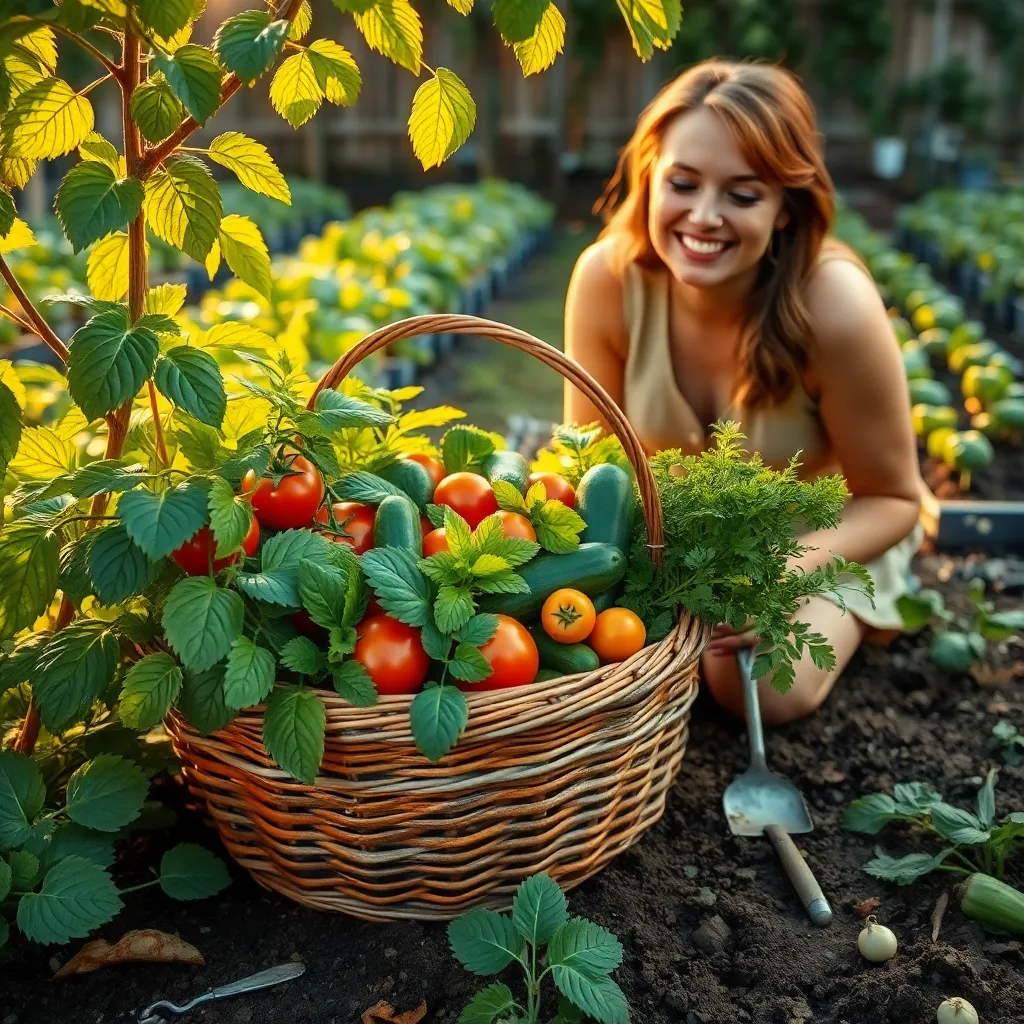
As your plants begin to mature, the excitement of harvesting your first yield is just around the corner. To ensure a successful harvest, it’s essential to know when your plants are at their peak. Timing is crucial, as picking too early or too late can impact flavor and yield.
For many vegetables, such as tomatoes and peppers, look for vibrant color as an indicator of ripeness. It’s important to gently squeeze the fruit; it should feel firm yet slightly yielding. For leafy greens like lettuce or spinach, harvest by cutting the outer leaves first, allowing the plant to continue growing for future harvests.
Water your plants thoroughly a day before you plan to harvest to ensure they are well-hydrated. This not only improves the taste but also makes the plants easier to handle. Avoid watering immediately before harvesting root crops like carrots or radishes, as the soil should be dry to prevent damage when pulling them from the ground.
Consider using sharp scissors or pruning shears for clean cuts to minimize plant damage and disease. For those interested in advanced techniques, succession planting is a great way to extend your harvest season. By planting seeds at intervals, you can enjoy a continuous supply of fresh produce throughout the growing season.
Conclusion: Growing Success with These Plants
In exploring the joys of nurturing life from seed, we’ve uncovered five key relationship concepts: patience, growth, resilience, nurturing, and communication. Just as seeds require time and care to flourish, so too do our relationships. Patience allows us to appreciate gradual progress, while growth reminds us that change is both natural and necessary. Resilience teaches us to weather challenges together, nurturing emphasizes the importance of consistent care, and communication ensures we understand the needs of those we cherish.
As an immediate next step, consider planting a small seed of connection today—reach out to someone you care about and share a moment of gratitude or encouragement. This simple act can strengthen your bonds and lay the groundwork for deeper, more meaningful relationships.
Remember, the seeds of today are the blossoms of tomorrow. Save or bookmark this article to revisit these concepts and nurture your relationships with intention and love. By investing in these foundations, you’re setting the stage for a lifetime of relationship success. Together, let’s cultivate connections that thrive and grow, enriching our lives and those around us.
